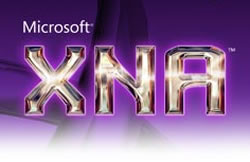YouTube may well be the leader in the path of "convergence of the TV and Internet". It is also one of those sites that entirely depends on the users contributing, rating and using Videos.
Here is a cool video of what kind of interesting/weird/funny stuff that folks do - (Btw, I think this is brilliant) Now, I have found some very interesting videos and have wondered about two things:
- What is the technology that allows YouTube to save and source so many videos?
- Can I save these videos for personal use later?
To address both these - I refer you to
Jim Thompson and J. Kevin Tumlinson's Making Movies blog on movies. Very interesting read. If you do not want to navigate the whole blog and read the article - here is a gist:
How can agencies like YouTube afford the bandwidth and speed?[From the
Making Movies Blog] "When you upload a video to YouTube, it is transcoded (decoded to raw video, then re-encoded) into
Flash Video (FLV) format. The video frame size is scaled to no larger than 320x240. I haven't been able to tell exactly what the rates are, but the frame rate appears to be between 25 and 30 frames per second, and the video data rate appears to be somewhere around 200 Kilobits (kbps) per second. Audio is reduced to mono and transcoded to a lower bit rate. This transcoding is what's going on in between the time you complete your upload to YouTube, and the time that the video is finally available for viewing."
Basically - this explains the quality of the videos on YouTube - if your initial quality is superior - transcoding will not affect too much of the quality - however, if the reverse is true, then the quality will be pretty poor. So watch out
What do I need to save videos from YouTube?
[From the
Making Movies Blog] "I found a nice site called
KeepVid that can download video files from YouTube, Google Video, and other video hosting sites. To play the FLV files you download, you can use the
FLV Player from martijndevisser.com"
Please note - respect copyrights
Will YouTube be the epitome of convergence of TV and Internet? It sure looks like it - I recommend that the next monitor that you buy - make sure its HD ready. You may very well need it.
Nomad.



